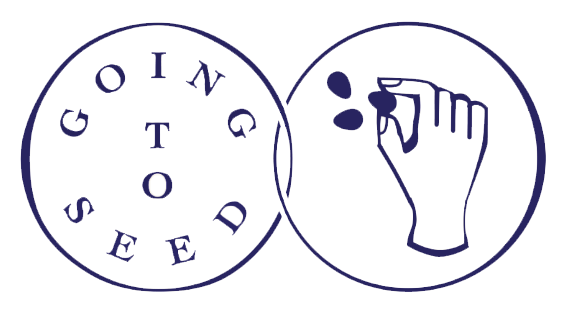By Anna Mieritz
Kale just loves to grow here. Right now, this spring’s planting is in full swing, and the seed from last year’s planting is getting mature and nearly ready to gather.
I started saving kale seed and adapting it to my garden years before I really understood what I was doing. Brassicas just like it here on the Northern California coast. They overwinter easily, and I save seeds from ones I like best. They also reseed on their own and volunteer pretty much all over the place.

I’ve added many varieties of kale, collards, and cabbages to the mix, with different colors, textures, and timing for a year round supply of tasty greens. I’m partial to the wrinkly leaves of lacinato type kales, the shine and tenderness of “greasy” collards, and contrasting rib colors.

Pieris rapae, the white cabbage moth, can decimate plantings of brassicas. I used to protect seedlings and pick the young caterpillars off my plants, but I no longer worry about them. Maybe my plants have evolved some resistance. Maybe allowing the plants to flower and complete their lifecycle attracts wasps and other predators. Probably a bit of both. Plants that attract aphids, or powdery mildew also get culled, resulting in a population that gets stronger every year.
The principles of Adaptation Gardening appealed to me immediately because I recognized patterns I’d observed over years in my own garden. I’ve eagerly applied these ideas to crops that struggle to grow in my cool climate. I’m now harvesting sweet peppers and small, tasty eggplant, two crops I’d previously considered impossible. But in late summer each year, I’m reminded of my first garden love and seed saving adventure, kale. Or as Joseph Zarr named our seed offering, Kale-Ish.


